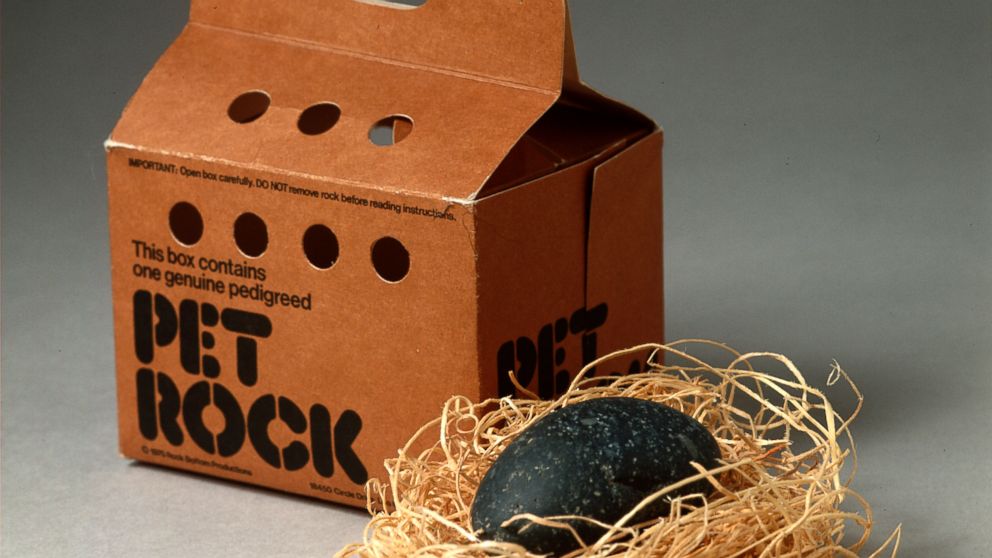Quirky Inventions That Changed The World - The Wacky And Wonderful
The history of human innovation is filled with quirky and offbeat inventions that have had a significant impact on our lives. From the safety pin to the paperclip, these quirky inventions have become ubiquitous and are now taken for granted. In this article, we will take a closer look at some of the quirky inventions that changed the world.
Author:Dr. Felix ChaosphereReviewer:Xander OddityMay 01, 202337 Shares1.3K Views

The history of human innovation is filled with quirky and offbeat inventions that have had a significant impact on our lives. From the safety pin to the paperclip, these quirky inventions have become ubiquitous and are now taken for granted. In this article, we will take a closer look at some of the quirky inventions that changed the world.
Quirky Inventions That Made A Huge Impact On Society
Check out quirky inventions that changed the world:
Velcro
Velcro was invented in the 1940s by Swiss engineer George de Mestral. During a hunting trip, he noticed that burrs were sticking to his dog's fur and his own clothing.
Curious about how the burrs were able to attach themselves so effectively, de Mestral examined them under a microscope and discovered that they had tiny hooks that allowed them to stick to anything with a loop-like structure.
Inspired by this observation, he developed a fastener system that utilized this concept. The result was Velcro, a two-sided fastener made up of one side with small hooks and another with loops.
When pressed together, the hooks latch onto the loops, creating a secure and easily detachable connection. Velcro has since been used in a wide range of applications, from clothing to aerospace technology.
Post-it Notes
Post-it Notes, on the other hand, were created by accident in 1968 by 3M scientist Spencer Silver. Silver was working on developing a strong adhesive, but instead ended up with a weak, pressure-sensitive adhesive that could stick to surfaces but was also easily removable without leaving residue.
For years, Silver was unable to find a practical use for his invention. It wasn't until 1974 when another 3M employee, Art Fry, came up with the idea of using the adhesive to create a bookmark that wouldn't fall out of his hymnal while singing in church.
He later realized the adhesive could be used to create sticky notes that could be easily attached and removed from documents and other surfaces. The result was the Post-it Note, which has since become an indispensable office supply and household item.
The Slinky
The Slinky is a simple, yet ingenious invention that has been captivating people's attention for decades. It is a spring-like toy that can perform a number of tricks, including walking down stairs on its own.
The Slinky was invented in 1943 by Richard James, a naval engineer who was working on a device to stabilize sensitive instruments on board ships during rough seas. He accidentally knocked a tension spring off a shelf and watched as it gracefully "walked" across the floor.
James saw the potential for a toy in the spring's movement and spent the next year perfecting his invention. He named it the Slinky, which is derived from the Swedish word "slinga" meaning "to sling" or "coil." The first Slinkys were sold for $1 each and quickly became a hit with children and adults alike.
One of the most interesting things about the Slinky is its ability to perform a number of tricks. It can walk down stairs, roll down inclines, and even dance in the hands of an experienced user. Its ability to seemingly defy gravity is part of what makes it so mesmerizing to watch.
Another interesting fact about the Slinky is its use in scientific research. In 1945, James and his wife Betty formed the James Industries company to manufacture and sell Slinkys.
The company was very successful and eventually funded research into the behavior of tension springs. The research led to the creation of several important inventions, including a shock absorber for use in military equipment.
Over the years, the Slinky has become an icon of American culture. It has been featured in numerous TV showsand movies, and has even inspired a hit song by the band Nirvana. Today, the Slinky is still being manufactured and sold around the world.
The Pet Rock
The Pet Rock, on the other hand, was the brainchild of advertising executive Gary Dahl. In 1975, Dahl was sitting in a bar listening to his friends complain about the hassle of taking care of pets when he came up with the idea for a pet that didn't require any care at all. He jokingly suggested a pet rock, and to his surprise, his friends loved the idea.
Dahl decided to turn the joke into a business and created a marketing campaign that poked fun at the pet industry while also playing up the Pet Rock's simplicity and low maintenance. Each Pet Rock came in a cardboard box with air holes and a tongue-in-cheek owner's manual that included tips like how to teach your pet rock to "play dead."
Despite its absurdity, the Pet Rock was an instant hit and became a cultural phenomenon. At its peak, Dahl was selling up to 50,000 Pet Rocks a day, and the toy made him a millionaire almost overnight. While the Pet Rock's popularity eventually waned, it remains a classic example of a quirky invention that captured the public's imagination.
The Segway
The Segway is a two-wheeled, self-balancing personal transportation device that was introduced in 2001. It was hailed as a revolutionary invention that would change the way people move around cities and towns.
The Segway was created by inventor Dean Kamen, who had previously worked on medical devices such as a portable insulin pump and a wheelchair that could climb stairs.
The Segway was designed to be an efficient and eco-friendly way to move around urban areas. It was marketed as a solution to the problems of traffic congestion and pollution, offering a new mode of transportation that was faster and more agile than walking but also more efficient and environmentally friendly than a car.
The Segway works by using a combination of sensors, gyroscopes, and motors to keep the device upright and balanced. The rider leans forward to move forward and leans back to slow down or stop. The speed of the Segway is controlled by a handlebar, which the rider holds onto.
The Segway quickly gained popularity among technology enthusiasts, tourists, and police departments, who found it to be a useful tool for patrolling city streets and crowded areas. It was also used by companies for internal transportation on large campuses or warehouses.
However, the Segway never achieved the level of mainstream success that its creators had hoped for. It was criticized for its high price point, limited range, and lack of versatility in different terrains. Additionally, some cities banned the use of Segways on sidewalks or bike paths, citing safety concerns.
In 2009, the company that produced the Segway was acquired by a Chinese firm, which has continued to develop and market the device. Today, the Segway has evolved into several different models, including a mini Segway and a Segway for off-road use.
Despite its limited success, the Segway remains a quirky and iconic invention that captured the imagination of many people around the world. It represented a new way of thinking about transportation and mobility in urban areas, and its influence can still be seen in the development of other innovative devices such as electric scooters and hoverboards.
People Also Ask
What Are Some Quirky Inventions That Changed The World?
Some quirky inventions that have changed the world include Velcro, Post-it Notes, the Slinky, the Pet Rock, and the Segway.
Who Invented The Slinky?
The Slinky was invented by Richard James, a naval engineer, and his wife Betty James in 1943.
What Is The Story Behind The Invention Of Post-it Notes?
Post-it Notes were invented by Spencer Silver, a 3M scientist, who accidentally created a low-tack adhesive in 1968. It took several years and a chance encounter with another 3M employee, Art Fry, before the idea of using the adhesive for a reusable sticky note was born.
How Did The Pet Rock Become So Popular?
The Pet Rock was invented by advertising executive Gary Dahl in 1975 as a joke gift. However, it became an unexpected sensation and sold over 1.5 million units in just a few months.
What Was The Original Purpose Of Velcro?
Velcro was invented by Swiss engineer George de Mestral in 1941 after he observed burrs sticking to his dog's fur during a walk. The original purpose of Velcro was to create a fastener that could be opened and closed repeatedly.
Conclusion
These are just a few examples of quirky inventions that changed the world and had a significant impact on our lives. While some may seem silly or frivolous, others have revolutionized industries and changed the way we live our lives. It just goes to show that sometimes the most offbeat ideas can be the ones that make the biggest difference.

Dr. Felix Chaosphere
Author
Dr. Felix Chaosphere, a renowned and eccentric psychiatrist, is a master of unraveling the complexities of the human mind. With his wild and untamed hair, he embodies the essence of a brilliant but unconventional thinker. As a sexologist, he fearlessly delves into the depths of human desire and intimacy, unearthing hidden truths and challenging societal norms.
Beyond his professional expertise, Dr. Chaosphere is also a celebrated author, renowned for his provocative and thought-provoking literary works. His written words mirror the enigmatic nature of his persona, inviting readers to explore the labyrinthine corridors of the human psyche.
With his indomitable spirit and insatiable curiosity, Dr. Chaosphere continues to push boundaries, challenging society's preconceived notions and inspiring others to embrace their own inner tumult.

Xander Oddity
Reviewer
Xander Oddity, an eccentric and intrepid news reporter, is a master of unearthing the strange and bizarre. With an insatiable curiosity for the unconventional, Xander ventures into the depths of the unknown, fearlessly pursuing stories that defy conventional explanation. Armed with a vast reservoir of knowledge and experience in the realm of conspiracies, Xander is a seasoned investigator of the extraordinary.
Throughout his illustrious career, Xander has built a reputation for delving into the shadows of secrecy and unraveling the enigmatic. With an unyielding determination and an unwavering belief in the power of the bizarre, Xander strives to shed light on the unexplained and challenge the boundaries of conventional wisdom. In his pursuit of the truth, Xander continues to inspire others to question the world around them and embrace the unexpected.
Latest Articles
Popular Articles

